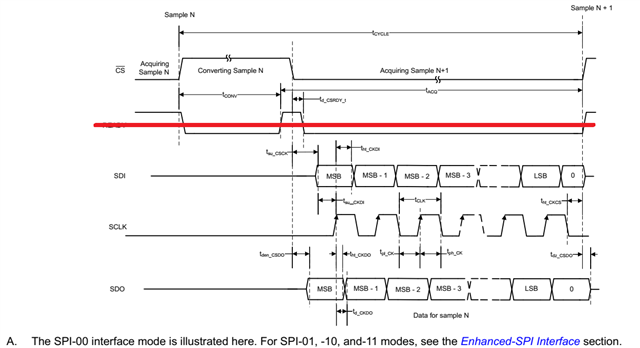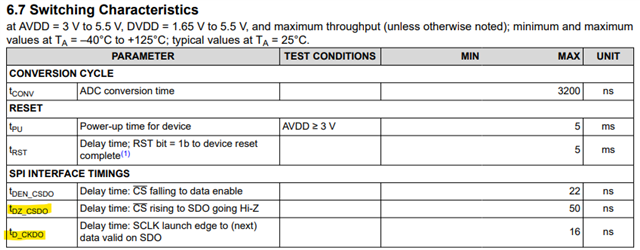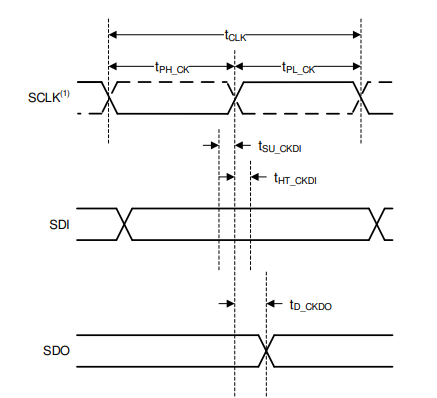Tool/software:
Hi,
In the "Related Questions" section, I will ask additional questions based on my previous interactions with the manufacturer's engineers.
We are currently supporting a customer evaluating the ADS7066IYBHT in a 5-device daisy chain configuration, and would like to confirm the following technical details regarding the SPI behavior.
1. Daisy Chain Receive Order
In the following configuration:
We understand that the input data (SDI) propagates through the chain such that each ADC receives its 24-bit command in reverse order as follows:
-
Clocks 1–24: ADC4 receives
-
Clocks 25–48: ADC3
-
Clocks 49–72: ADC2
-
Clocks 73–96: ADC1
-
Clocks 97–120: ADC0
Could you please confirm whether this interpretation matches the internal shift register behavior described in the datasheet section 7.3.10.2 Daisy-Chain Mode?
2. SPI-00 Protocol Timing Behavior
Regarding the SPI-00 protocol (default), our understanding is:
-
SDI is latched on SCLK rising edge
-
SDO updates on SCLK falling edge
Additionally, we would appreciate your clarification on:
-
Page 9 of the datasheet (Figure 6-3) appears to imply:
-
SDO becomes valid after CS falling edge +
tDEN_CSDO -
SDO toggles after SCLK rising edge +
tD_CKDO
-
-
However, we could not find explicit timing definitions for tDEN_CSDO or tD_CKDO in the electrical characteristics table.
Do you have more detailed SPI timing charts (such as SCLK / SDI / SDO waveform diagrams), especially for Daisy Chain mode in SPI-00, that you could share?
Thanks,
Conor





